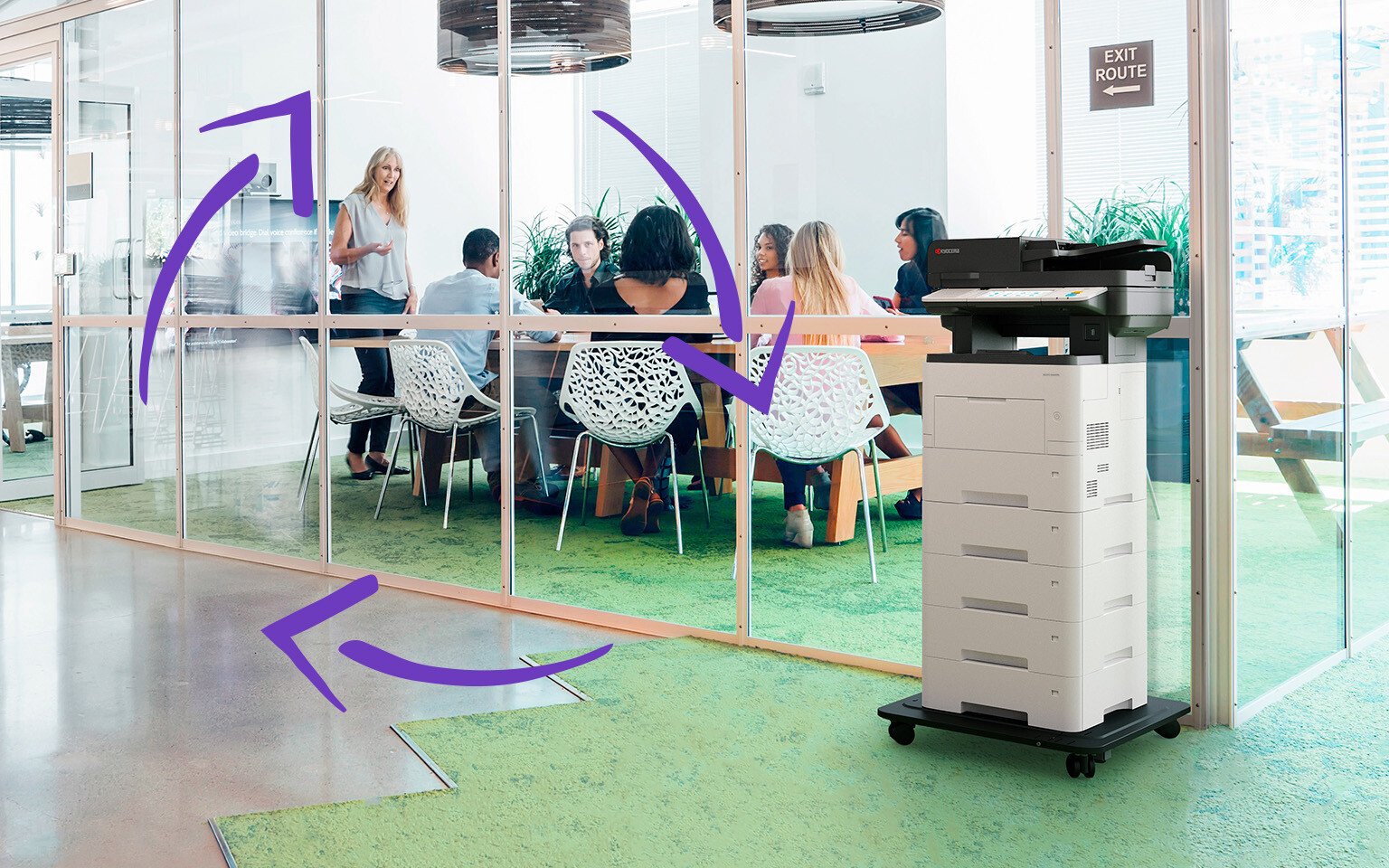
Document security used to be a straightforward, although fallible, matter of locking your filing cabinet or password-protecting your documents. But in recent years, it has grown significantly more complex. Mitigating security risks now demands vigilance and adaptability to a myriad of emerging trends and technologies.
So how can business and IT leaders keep up? This blog aims to guide you through the pivotal developments shaping the future of document security, from advanced encryption methods to the integration of AI and machine learning.
Trends shaping the future of document security
Cybersecurity is constantly evolving, requiring organisations to stay proactive and informed. Here are some of the top trends to keep an eye on to ensure your document security remains robust and resilient in the face of these challenges:
Advanced encryption
There is no denying that cyber threats are on the rise and pose serious risks to business data. According to research compiled by UpGuard, data breach reports have risen 712% since 2018. However, reports suggest that Australia is significantly behind on encryption in comparison with the rest of the globe. This lag leaves Australian organisations particularly vulnerable to data breaches and cyberattacks. To combat these risks, it is crucial to prioritise:
1. End-to-end encryption
Also known as E2EE, this method ensures that data is encrypted from the sender's device to the recipient's device, making it near-impossible for cybercriminals to intercept and decipher the data in transit. The encryption market in the APAC region is currently valued at $14 billion and is tipped to reach $25.56 billion by 2031. This growth highlights the increasing recognition of encryption as a critical part of cybersecurity and a proactive measure to safeguard the future of document security.
2. Quantum and post-quantum cryptography
Traditional cryptography provides document security through codes based on complex maths problems. However, powerful quantum computers threaten to break these codes, potentially compromising sensitive information. That’s where quantum and post-quantum cryptography (PQC) come in.
Quantum cryptography leverages the unique properties of quantum mechanics to directly transmit unbreakable encryption keys.
But what happens if a cybercriminal has access to a quantum computer that can break quantum keys? Enter post-quantum cryptography (PQC). PQC focuses on developing new algorithms that are resistant to both classical and quantum computers. The Australian Government is investing heavily in quantum technology and is prepared to make further strides in the space, so expect to see a boom in this market.
Biometric authentication
There has been a long-running tension between end-user experience and cybersecurity. The solution increasingly looks like biometric authentication, and the demand for it has grown significantly. The Australian biometric technology market is expected to grow at an average rate of 3.37% per year up to 2028, so retina, speech and fingerprint scanners will become a more common form of document security in the next few years!
Secure sharing practices training
A report from the Office of the Australian Information Commissioner found that 30% of breaches from July–December 2023 were caused by human error, an increase of 4% from the previous period. This rise underscores the growing need for improved training and protocols to mitigate these risks – and not just in Australia.
Organisations worldwide are increasing their investment in security awareness training programs to prevent breaches caused by human error. In 2023, Cybersecurity Ventures predicted that global spending on security awareness and secure sharing practices will almost double to reach $10 billion by 2027.
Technologies to keep an eye on
While the threat of cyberattacks are growing, here are some of the key technologies protecting the future of document security:
Cloud-based document manage systems (DMS)
Cloud-based document management systems continue to be the go-to for cyber-smart organisations. Their flexibility, scalability and accessibility are unparalleled, eliminating the need for cumbersome servers and limited access. Moreover, these systems boast enhanced security features and automatic backups, offering peace of mind for businesses handling sensitive data.
AI and machine learning
Artificial intelligence (AI) and machine learning continue to transform industries and practices – and document management is no different. Here are two of the key AI-driven technologies paving the way:
1. Behavioural analytics
Behavioural analytics, powered by AI and machine learning, analyse large datasets on typical user behaviour and use it to detect suspicious activity. These systems continuously track and learn from user interactions within documents and systems to detect and respond to suspicious activity in real-time.
2. Robotic process automation for threat detection
Cybersecurity professionals often deal with repetitive tasks that distract them from higher-value, big picture thinking. Robotic process automation automates routine checks, freeing up teams to focus on threat hunting, vulnerability assessments, incident response planning and security awareness training.
Cloud security technology
Cloud security technology will remain central to business cybersecurity, especially for hybrid or remote-first organisations. Key activities include zero trust policies, modern encryption and multi-factor authentication. As cloud-based security management platforms grow, securing communications between remote devices and servers is crucial. Converged security systems, integrating physical and cyber security, are increasingly adopted to protect against sophisticated attacks and reduce cross-platform risks.
Cyberthreats are on the rise
Staying ahead of trends and tech shaping the future of document security is crucial to keep your organisation secure now and into the future. Key areas to focus on include advanced encryption methods, biometric authentication, and AI-driven security measures. By understanding and implementing these innovations, organisations can enhance their security, protect against emerging threats, and ensure the safe management of financial documents.
The interplay of print and document security is increasingly complex in the era of remote work. But Kyocera customers can count on our industry-leading expertise and proven ability to protect their business. Download our guide to learn more about our specialised document security solutions.








